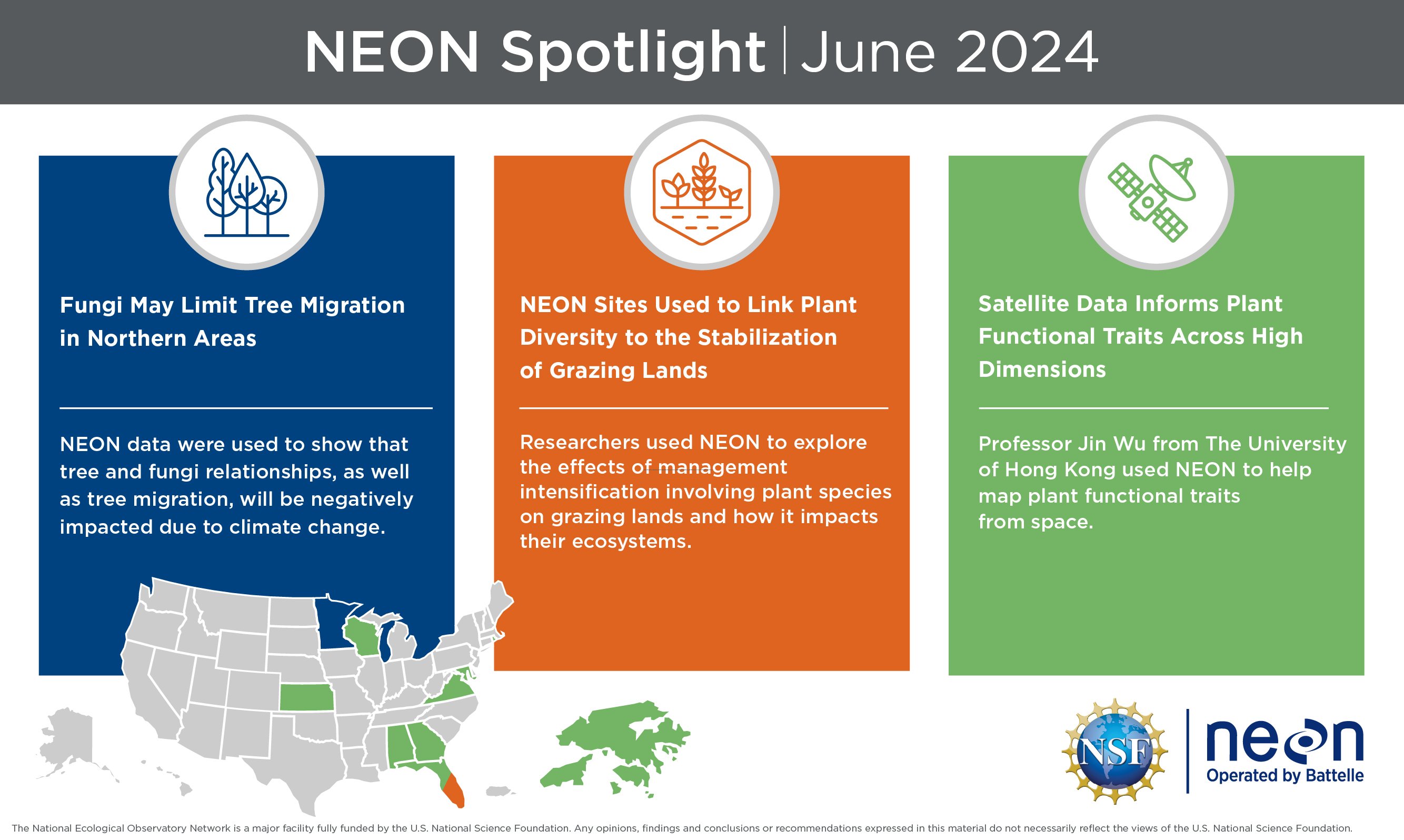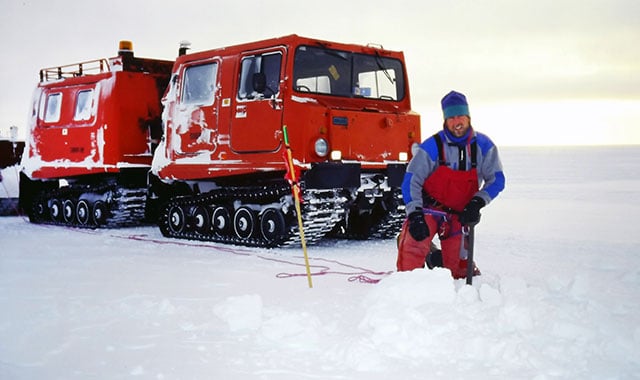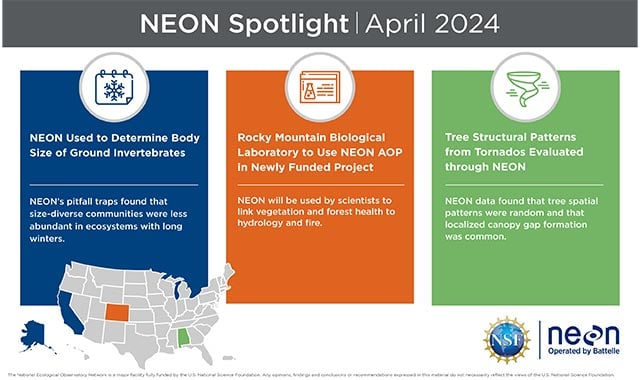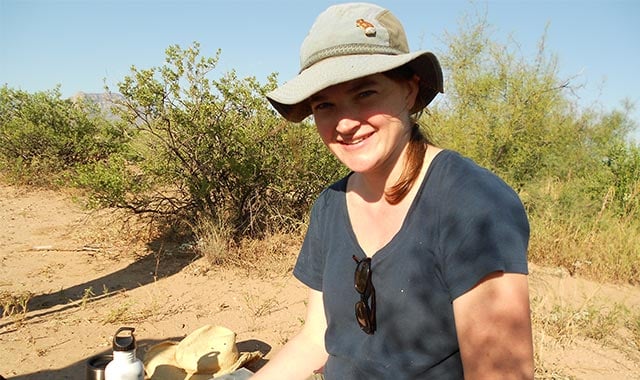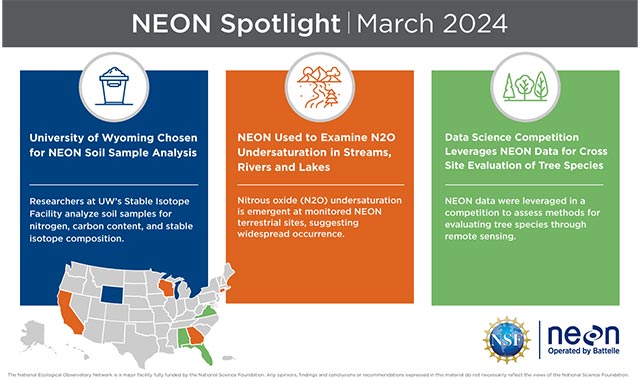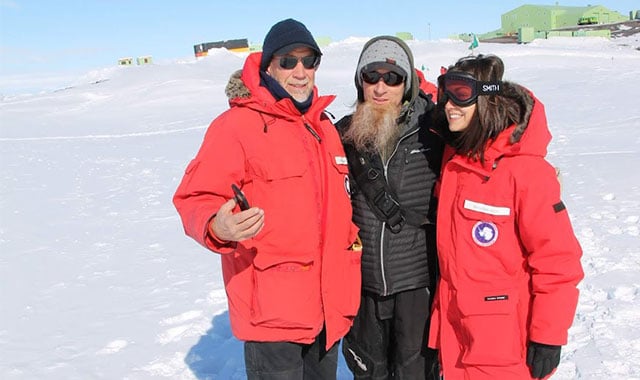NEON: A Dynamic Observatory for 30 Years
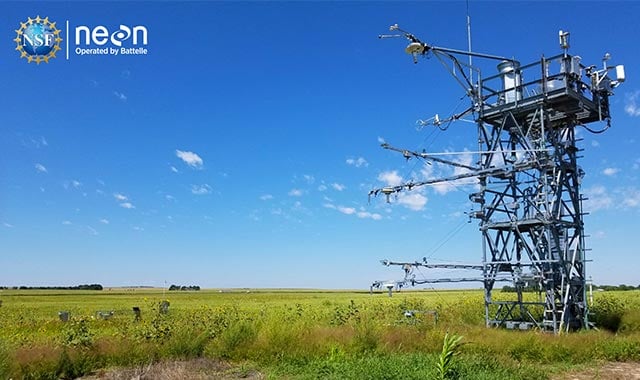
In September, we celebrated the news that the United States National Science Foundation (NSF) awarded Battelle a five-year award for the continued operations and maintenance of the National Ecological Observatory Network (NEON).
Battelle was first selected in 2016 by the NSF to complete the construction and commence initial operations for NEON. Construction was fully completed in 2019, and the continental-scale facility entered full operations. The Observatory is designed to enable long-term, open-access, standardized ecological data collection. From 81 U.S. field sites, NEON collects and provides free and open data and samples that enable scientists to characterize, quantify, and predict how our nation's ecosystems are changing.
Receiving the new award from NSF to continue managing the NEON Program presents another avenue for Battelle to pursue its mission of bettering society through science. “We are excited to work closely with the full scientific community to expand the reach and impact of NEON data and assets to strengthen science and education,” said NEON Chief Scientist and Observatory Director Paula Mabee in a Battelle press release.
So, what is NEON?
A Resilient Observatory: Dealing with Disasters
In the ever-evolving world of ecological research, NEON has weathered many unexpected challenges. From natural disasters to the COVID-19 pandemic, the Observatory team has shown resilience and adaptability to ensure both the safety of their personnel and the continuity of critical ecological data.
NEON field sites are situated in diverse regions, each susceptible to unique natural disasters. California faces wildfires and earthquakes, while hurricanes threaten the Gulf, Atlantic Coasts, and Puerto Rico. The NEON program has developed robust safety and contingency plans capable of responding to virtually any crisis, prioritizing the safety of its staff above all else. This principle was evident when Hurricane Maria struck Puerto Rico in 2017, damaging the newly operational D04 field sites. Battelle swiftly dispatched emergency supplies, including generators and food, to support the field teams. Data collection resumed within weeks.
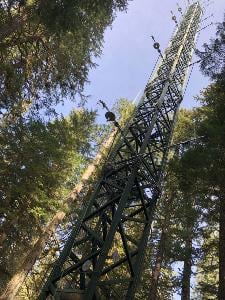
Photo: A NEON tower at Wind River Experimental Forest (WREF)
The COVID-19 pandemic presented an unprecedented challenge, affecting the entire Observatory. NEON teams responded by adhering to local safety protocols and implementing virtual training programs for seasonal field staff. They also developed policies for remote work, revamped team structures, and minimized potential risks for field workers. While the pandemic did lead to some gaps in observational data, instrument data collection remained largely unaffected. NEON prioritized clear communication with data users, offering support and education to help them navigate these challenges.
An Adaptive Observatory: Preparing for the Long Haul
NEON was designed to operate continuously until at least 2049, the 30-year timespan necessary to reveal meaningful trends in ecology. One of NEON's primary objectives is to provide researchers with consistent, high-quality, and comparable data across both spatial and temporal scales.
NEON's secret to data continuity lies in its climate-resilient designs. It anticipates, prepares for, and responds to climate-related challenges at each field site, ensuring the durability of instrument systems and infrastructure. For instance, tower infrastructure in Puerto Rico was designed to withstand hurricane-force winds, and protocols are in place to protect instruments during severe weather. Regular maintenance and calibration are integral to ensuring data consistency, quality, and comparability across all field sites.
NEON's data aren’t just for scientists; they also support climate resilience planning for communities, governments, and commercial entities. By revealing how ecosystems respond to land use changes, invasive species, and climate change, NEON data can aid in emergency planning, sustainable land management, disease prediction, and food security. Moreover, NEON serves as a testing ground for climate resilience technology through its Assignable Assets program; its collection sites across various climate zones make it ideal for testing equipment such as Arable sensors for precision agriculture and other innovations.
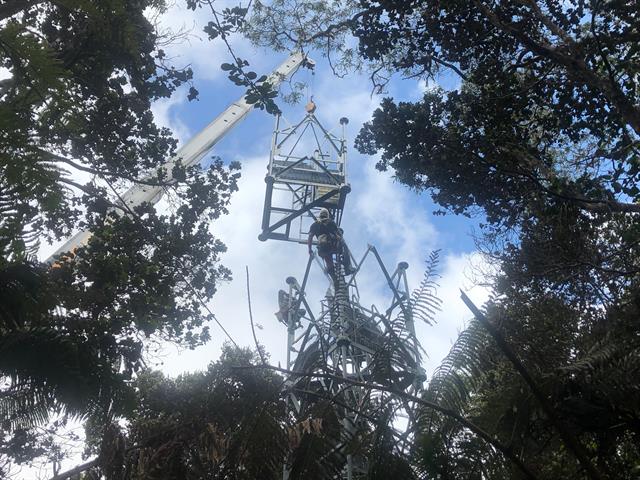
Photo: A NEON employee working on the WREF tower
A Responsive Observatory: By Ecologists, For Everyone
NEON is designed to cater to the diverse needs of scientists, students, teachers, community groups, government bodies, and citizens. Developed in collaboration with subject matter experts and end-users, NEON continually evolves based on user feedback to better serve its community.
NEON's data has already been utilized in hundreds of peer-reviewed studies, addressing significant questions related to biodiversity, ecosystem change, climate change, land use, and invasive species. Over its 30-year lifespan, it's expected to contribute to thousands more studies, even those beyond its original design.
Designing an ecological observatory of NEON's scale and scope is a significant undertaking. NEON's data products were meticulously chosen to support a wide range of research questions. The observational protocols and instrument systems were designed for optimal data quality, continuity, and availability. Additionally, NEON's resources, such as the Data Portal and educational materials, aim to accommodate a diverse user base with varying skill levels.
The NEON program relies on advisory groups, such as the Science, Technology & Education Advisory Committee (STEAC) and Technical Working Groups (TWGs), to shape its direction. STEAC offers guidance on priorities, changes, and enhancements, ensuring that NEON stays aligned with its mission. TWGs, composed of experts, provide valuable input into data collection, methods, and data products, making them crucial contributors.
NEON has embraced recommendations from these groups and the user community to enhance its offerings. For example, in response to user requests, NEON introduced the L1 Methane Concentration data product in 2021, requiring instrument calibration. A recommendation from the Small Mammal TWG led to a shift in pathogen testing protocols from hantaviruses to tick-borne diseases, addressing public health concerns and user interests.
Beyond advisory groups, NEON engages with its community in various ways. Partnerships with more than 200 organizations improve data discoverability and resource sharing. Workshops, user groups, and collaborations, like the NCAR-NEON Community Collaboration and the NEON Ambassador Program, foster connections and awareness among users. NEON also supports diversity, equity, inclusion, and accessibility initiatives in the earth sciences.
The NEON program serves as an invaluable resource for ecological research and education, collaboratively shaping its offerings through advisory groups and user feedback. It fosters engagement with the broader community, supports diversity and inclusion, and provides opportunities for researchers to leverage its assets for innovative projects. NEON's commitment to openness and adaptability, along with Battelle’s strong experience in maintaining complex facilities and missions, ensures its continued relevance in ecological science and education.
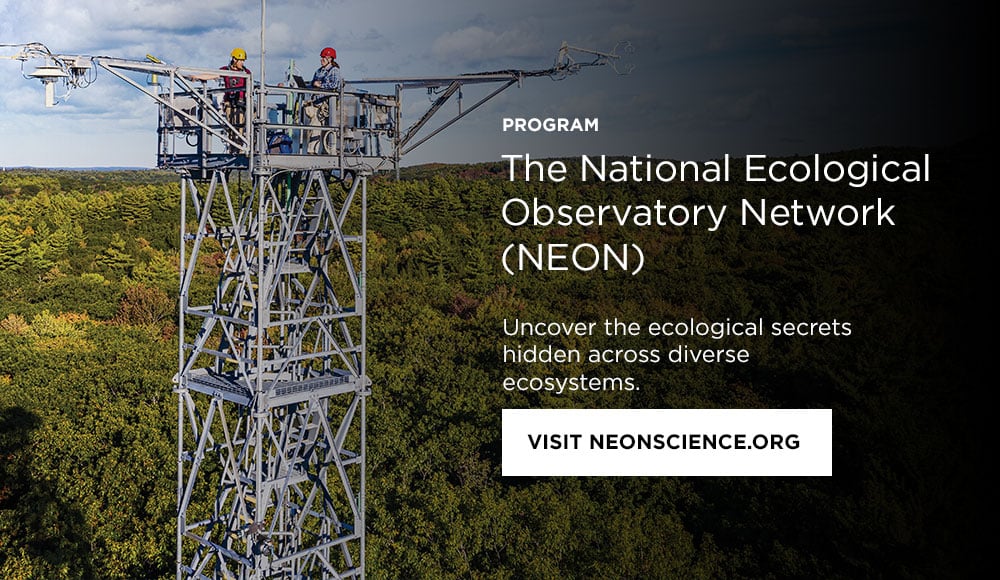
Related Blogs
BATTELLE UPDATES
Receive updates from Battelle for an all-access pass to the incredible work of Battelle researchers.
